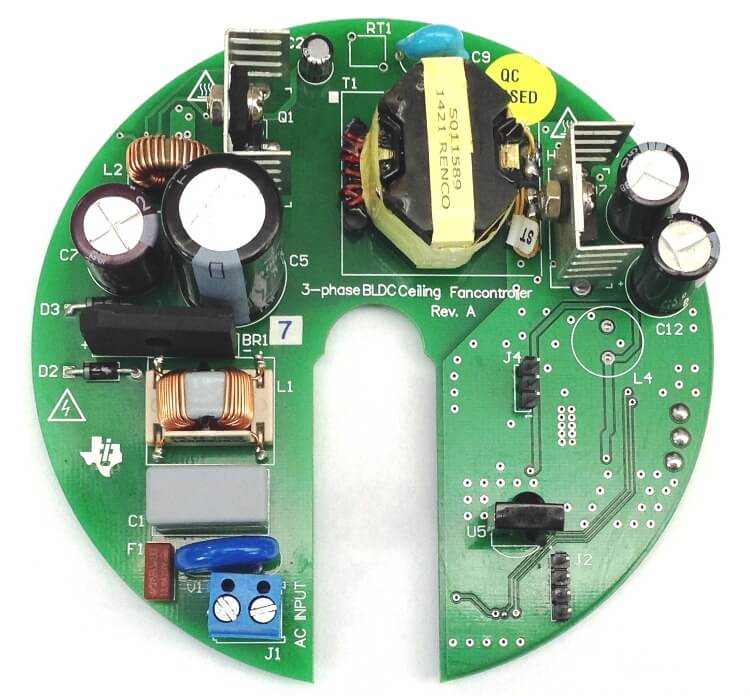The Brushless DC (BLDC) ceiling fan controller with sensorless sinusoidal current control design runs from AC power and can convert 90-265 VAC into 24 VDC.

In the ceiling fan segment, single-phase induction motors have traditionally dominated due to their ability to run directly from commonly available power sources in homes/offices. However, these motors are known for their high power consumption and relatively low efficiency, typically operating at around 30-40% efficiency. Moreover, the speed control mechanism, which involves voltage regulation, introduces additional losses to the system and makes it challenging to maintain a constant speed due to fluctuations in input voltage. To solve this problem Texas Instruments (TI) has launched a Brushless DC (BLDC) ceiling fan controller with sensorless sinusoidal current control TIDA00386 reference design. The design runs from AC power and can convert 90-265 VAC into 24 VDC. The reference design offers a comprehensive solution for ceiling fan applications utilising a 3-phase Brushless DC (BLDC) motor. The design is best suited for various industrial applications such as dental chairs, operation power conditioning, Electrosurgery system, etc.








